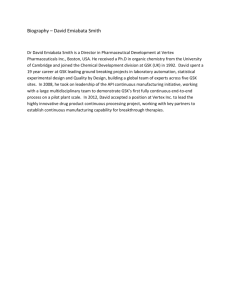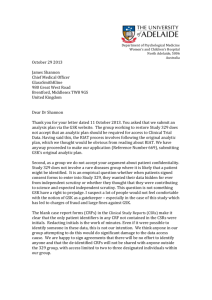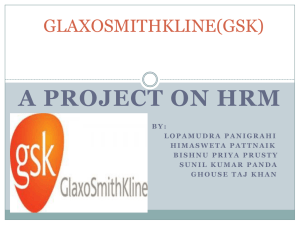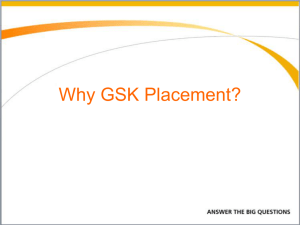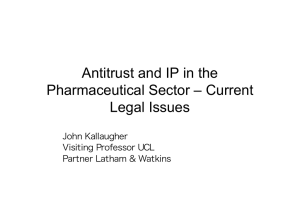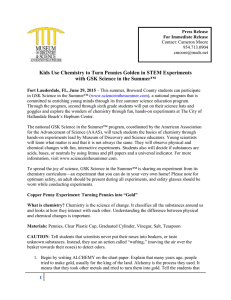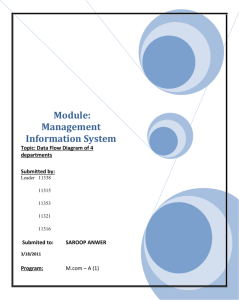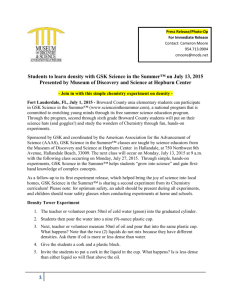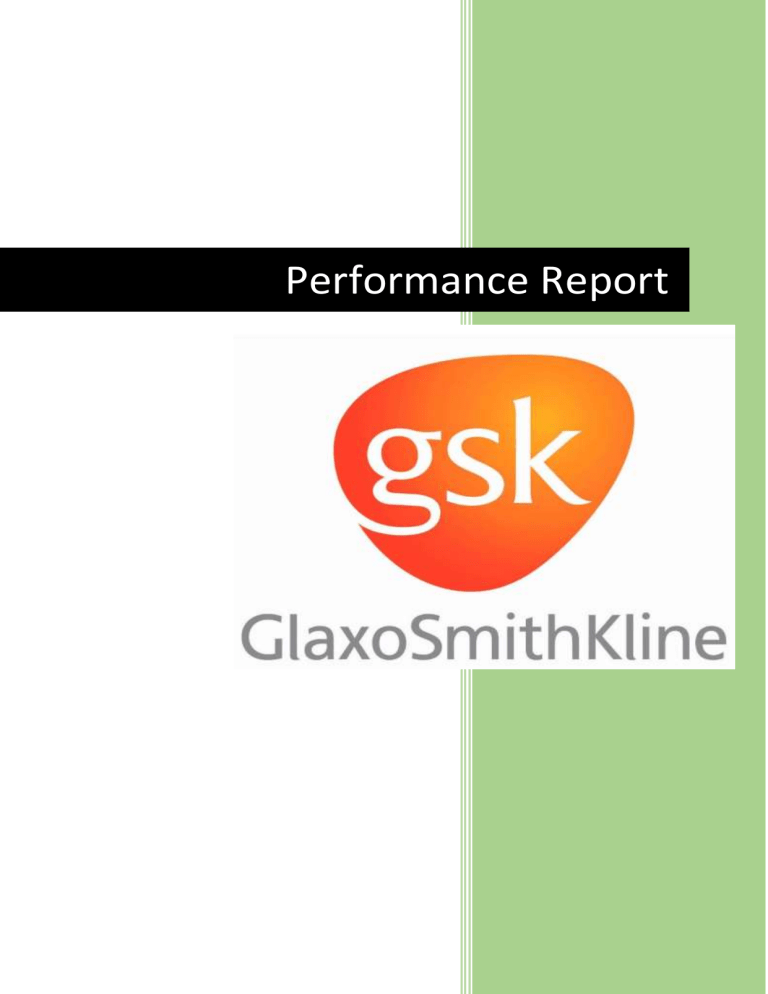
Performance Report Contents Executive Summary ................................................................................................................. 2 Introduction .............................................................................................................................. 2 Background, Purpose, and Structure ................................................................................. 2 Literature Review .................................................................................................................... 3 SWOT Analysis .................................................................................................................... 4 Financial Analysis ................................................................................................................ 4 Ratio Analysis ....................................................................................................................... 4 Balance Scorecard ................................................................................................................ 5 External Analysis – PESTEL Analysis ............................................................................... 5 Performance Analysis .............................................................................................................. 6 External Influencers ............................................................................................................. 6 Financial Analysis ................................................................................................................ 9 Balanced Scorecard ........................................................................................................................ 10 Appendices ........................................................................................................................................... 13 Appendix 1 ....................................................................................................................................... 13 Appendix 2 ....................................................................................................................................... 14 1 Executive Summary The study is based on an evaluation of GSK plc's performance. This was done in order to recognize and comprehend the organization's key performance indicators, constraints, and areas for improvement. The author provides an overview of the company, including its history and current position. The literature in financial ideas used in external, internal, and financial analysis has been critically debated in this report. The PESTEL analysis was used to examine GSK's external environment, which revealed important negative effects from political, economic, and legal factors, as well as opportunities in social, technical, and environmental areas. This was then assessed in terms of internal analysis using a SWOT analysis. Profit margins, liquidity, and profitability ratio were used to evaluate GSK's financial performance over a period. The strategic theme of business development, as well as operational and cost efficiency, was used to create a balanced scorecard. Financial, customer, internal business, and learning and development objectives, measures, and KPIs have been created for the four views. The report concludes with appropriate findings and recommendations regarding GSK's performance. Introduction Background, Purpose, and Structure GlaxoSmithKline (GSK) is one of the biggest pharmaceutical research and development firms, developing, manufacturing, and marketing a wide range of quality human personal care products (Prange and Kattenbach, 2019). The company's headquarters are in the United 2 Kingdom, but it also has a presence in the United States of America. The firm employs over 1,03,000 people and operates two distinct core businesses. Pharmaceuticals and personal care products are the two subsidiaries. Seretide and Advair are two of GSK's most popular products, accounting for over 85% of the company's sales (COPD). Anti-malaria drugs, Zentel, Pentosam, antiretrovirals, and TB drugs are among the company's other important products (GlaxoSmithKline 2013). Andrew Witty, CEO of GSK, took a strong a philanthropic gesture by donating one-fifth of total profits to undeveloped countries to establish health services, and promote malaria vaccine pricing at just 5% more than the cost for lower-income countries to improve the company's credibility (Weeden, 2011). "We function like crazy to deal with the next excellent medicine, understanding that it is likely to get used a lot in developed countries, but we could do something for developing countries," says Andrew Witty, CEO of GSK (Boseley, 2009). This report seeks to uncover the secrets to this global pharmaceutical market leader's success by examining the internal, external, and financial factors that influence its performance. This would reveal the reasons that contributed to its success as well as its limits. 3 Literature Review This report evaluates GSK plc's performance using the analytical techniques critically discussed below. SWOT Analysis The SWOT analysis has often been regarded as a highly rated and valued tool for strategic planning and analysis of an organization's resources and climate, and it is widely used by small and medium businesses in the UK. The conventional method of gaining insights into how to achieve the optimal alignment is to do a SWOT study, which looks into strengths, weaknesses, opportunities, and threats (Ansoff, 1965) (Refer Fig. 1 in Appendix 1). Despite the internal emphasis, the strengths and weaknesses must be analyzed in light of the company's main performance indicators, as well as the demands and competitors in its environment (Thompson et al., 2017). This gives a glimpse into how to use opportunities and strengths to resolve threats and weaknesses. Furthermore, the ambiguity and inadequate prioritization of SWOT factors can prevent specific and reliable solutions from emerging. Financial Analysis Ratio Analysis By giving significance to such estimates, the use of ratios to analyze financial statements allows for a better analysis of the company's results. Financial ratio analysis provides insight into the different dimensions of a business, such as performance, productivity, even liquidity, and helps to determine the firm's overall uncertainty. Even then, several drawbacks must be taken into account during the study. The comparability of such ratios will be harmed if a company's accounting practices have evolved. Furthermore, owing to the likelihood of exceptions and 4 misleading statements, financial assumptions derived regarding a company's financial condition could be unreliable (Faello, 2015). Balance Scorecard “A strategic planning system that relies on financial and non-financial success results to determine areas of change within the company,” according to the balanced scorecard (Christian, 2019). Balanced scorecards are preferred by businesses for calculating and providing feedback. Data analysis is key to creating quantitative outputs because corporate executives collect, evaluate, and use data to make informed decisions for the business (Refer Fig. 2 in Appendix 1). The balanced scorecard paradigm supports positive behavior in an organization by isolating four distinct fields that need to be reviewed. The balanced scorecard would provide insight into the company as a whole when looking at business goals. The balanced scorecard model can be used to define where value is added within an organization using policy tracing. A balanced scorecard may also be used to develop organizational strategic plans and goals. External Analysis – PESTEL Analysis PESTEL research gives useful insight into the operational problems that every business in the market, and therefore the company in question, continues to face. (Refer Appendix). 5 Performance Analysis External Influencers GSK plc has shown its industry leadership by outperforming its competitors. External influences on GSK's success have been examined using PESTEL analysis. Political: GlaxoSmithKline plc operates in the Drug Manufacturers and major industries in more than various countries, exposing the company to a variety of political threats. Trade policies and tariffs relating to healthcare, the risk of military intervention, bureaucracy and involvement in drug manufacturers, the legal system for contract compliance, the level of corruption, pricing regulations, and taxation are all important considerations concerning GSK's market and can lead to a drop in revenue (Khan et al., 2015). After a long time, the government gave the pharmaceutical sector a devaluation price adjustment, which helped to reduce any margin decline. Changing government regulations that affect the pharmaceutical industry could have an effect on our stock values, based on how favorable or unfavorable the policies are (Refer Fig. 3 in Appendix). Economic: The aggregate demand and aggregate expenditure in an economy are determined by macroeconomic variables such as inflation, savings rate, interest rate, foreign exchange rate, and economic cycle. Microenvironmental considerations such as competition standards affect the firm's competitive edge. The devaluation of the rupee increased the cost of imports and locally purchased materials. Furthermore, High inflation and slow economic growth would have an effect on the company's success. The increase in the Company's cost of sales was primarily due to currency depreciation and inflation (See Fig. 4). If the Pakistan Rupee had devalued or improved by 5% against the US Dollar on December 31, 2019, and all other factors remained stable, profit before tax for the year would have been Rs. (0.24) million lower or higher (GSK, 2020) 6 Social: Shared views and attitudes of the people play a significant role in how GlaxoSmithKline plc marketers perceive and design brand messages for customers in a particular market. Cameron (2012), on the other hand, identifies the most important societal influence in the present climate as rising levels of consumer dissatisfaction toward vast numbers of profits made by pharmaceutical firms and declining representations of large pharmaceutical companies. Technological: GSK places a strong emphasis on research and development, especially in the function of the immune system, biology, and emerging technological changes (GSK, 2020). The Business expects to introduce a new ERP system in 2020, to take advantage of technological advancements and achieve operating efficiencies. It also wants to transform its office space into a Smart Office. Furthermore, they are currently working on launching electroceuticals that will be beneficial to treat chronic infections and diseases (kollewe, 2017). Environmental: Ecological considerations also have a direct effect on GSK's marketing policy, such as issues relating to global warming, the impact of GSK's operations on the atmosphere, and stakeholders' reactions to this impact. GSK aspires to be the most environmentally responsible healthcare business in the world. Employees became interested in a Tree Planting Campaign as a result of this. Legal: The Organization maintains that all relevant laws and rules are implemented. It also keeps up to date with new legislation and ensuring that the appropriate agencies are following them. Similarly, when implementing human resource policies, anti-discrimination legislation must be closely examined, since unfair lawsuits against employers impair the organization's reputation and affect its ability to recruit and maintain talent. 7 SWOT Analysis Strength: GSK Plc has developed a reputation for successfully targeting international markets. The expansion also enabled the company to diversify its sales streams and reduce economic cycle risk in the markets it serves. A successful logistics network guarantees that the products are available anywhere and improves its ability to deliver newer products to customers as quickly as possible. GSK's dedication to technological enabled R&D growth aids in the company's market place strengthening. Weakness: In several countries, GSK has been accused of illegally promoting prescription medications, charging misleading prices, and failing to disclose safety results (BBC, 2016). For example, allegations of endorsing antidepressants that were not approved by the FDA in the United States. These events have a detrimental effect on the company's public reputation. Opportunities: In recent years, GSK has been growing its business by synthetic means. For example, in 2016, ViiV, GSK's HIV expert firm, partnered with Pfizer and Shionogi, and in 2015, GlycoVaxyn was acquired in Switzerland. The rising demand for high-quality healthcare goods during Covid-19 provides opportunities for pharma firms like GSK to boost both their bottom and top lines. Threat: In certain jurisdictions, medication prices are controlled by statute. A new pricing reform strategy has been proposed, in which prescription costs may be reduced (GSK, 2020). GSK Plc's commodity is also threatened by counterfeit and low-quality imitations, especially in emerging and low-income markets. GSK Plc's sustainability can be jeopardized by can raw material costs. 8 Financial Analysis The financials of GSK were examined using the ratios listed below (See Appendix). Return on Capital Employed (ROCE) and Return on Equity (ROE) have been used to assess profitability. ROCE (Return on Capital Employed) is a metric that measures how efficiently capital is used to produce profits, and it has risen in 2017. However, in 2019, the rate of increase was 1.3 percent, down from 0.5 percent in 2018. This may be because the company invested less in capital and thereby was less effective than in 2017 (GSK, 2020). The ability of a company to produce profits from shareholder investments is measured by its return on equity (ROE). In 2018, the return on equity (ROE) fell by 0.7 percent, indicating that shareholders' money was well spent. While there was a reduction in ROCE in 2019, it was still marginally higher than the rate of increase in 2018. As a result, ROE indicates that GSK has progressed at a slower rate over the past year, but has maintained its overall position. (Khan et al., 2015) GSK's liquidity has been assessed using the current and quick ratios. In comparison to the previous year, the current ratio has decreased by 2.4 percent. As of December 31, 2019, this was primarily due to a decrease in trade debts and an increase in payable balances, which was partly offset by an increase in inventories. The quick/acid test ratio has remained constant at 1.02 times, and the cash to current liabilities ratio has remained constant at 0.44 times. The Asset Turnover Ratio is used to assess GSK's operational effectiveness because it reflects the company's ability to produce sales from its assets. The total assets turnover ratio rose to 1.6 in 2019 from 1.5 in 2018, owing to higher net sales that were partly offset by higher capital spending. Due to a major rise in net sales, the fixed assets turnover ratio increased to 3.9 in 2019 from 3.8 in 2018. (GSK, 2020) 9 Balanced Scorecard GSK plc's balanced scorecard focuses on operational and cost efficiency, as well as business development. Although GSK is already the industry leader, the firm must continuously develop its corporate practices to retain its position in the global market. Encourage workforce performance through bonuses to make sure their priorities are consistent with the broader targets to improve overall organizational performance while retaining the same degree of quality goods and services. (kollewe, 2017). The next step for the company to see as an alternative approach to its current market activities is diversification and globalization. It is well understood that the next century will be dominated by healthcare products, which is why the industry will need to move on to begin producing a variety of products that address new-age illnesses and health issues. (kollewe, 2017). Conclusion & Recommendation To summarize, we may assume that GSK can exploit its expertise and facilities to become the leading pharmaceutical products group. However, the firm has a long way to go before it becomes a significant player in the world of Consumer Healthcare products. Furthermore, its other focus areas, such as vaccine development, are a special domain that is less studied by those around the globe. Overall, the organization must concentrate on its plans to ensure the appropriate execution and management systems are in place. Customers should be sold environmentally friendly goods. It should be built in such a way that it is both affordable and eliminates emissions. This is an increasing potential need, and the 10 business will inevitably need to invest in technology that will allow it to extend its operations to appeal to a much larger audience. (Khan et al., 2015) References Ansoff, H. Igor, 1965. Corporate Strategy, New York: McGraw-HilI. Barnett, V., and Lewis, T., 1994. Outliers in Statistical Data. (3rd ed.) John Wiley & Sons, Inc Boseley, S., 2009. Drug giant GlaxoSmithKline pledges cheap medicine for the world's poor. The Guardian [online] 13 February. Available at: <https://www.theguardian.com/business/2009/feb/13/glaxo-smith-kline-cheap-medicine> [Accessed on 20 February 2020] Cameron, K. S., 2012. Positive leadership. San Francisco, CA: Berrett Koehler. David, F.R., Creek, S.A., & David, F.R., 2019. What Is the Key to Effective SWOT Analysis, Including AQCD Factors. SAM Advanced Management Journal. 84, 25. Faello, J., 2015. Understanding the Limitations of Financial Ratios. Academy of Accounting and Financial Studies Journal. 19 (3), 75-85 Glaister, K. & Falshaw, J., 1999. Strategic Planning: Still Going Strong?". Long Range Planning 32 (1), 107-116 GSK, 2020. About us [online] Available at <https://www.gsk.com/en-gb/about-us/> [Accessed on 02 February 2020] Khan, U., Alam, M., & Alam, S., 2015. A Critical Analysis of Internal and External Environment of Apple Inc. International Journal Of Economics, Commerce And Management, 3(6). 11 Prange, C., and Kattenbach, R., 2019. Management practices in Asia: case studies on market entry, CSR, and coaching. Cham: Springer. https://doi.org/10.1007/978-3-030-19662-2 Samejima, M., Shimizu, Y., Akiyosho, M., and Komoda, N., 2006. SWOT analysis support tool for verification of business strategy. In IEEE international conference on computational cybernetics Thompson, J., Scott, J., & Martin, F., 2017. Strategic management (8th ed.). Cengage Learning EMEA. Weeden, C., 2011. Smart giving is good business: How corporate philanthropy can benefit your company and society. San Francisco, CA: Jossey-Bass.P69 12 Appendices Appendix 1 Figure 1: SWOT Analysis Figure 2: Balanced Scorecard 13 Appendix 2 Figure 3: Changes in Share prices Figure 4: Cost of Sales Figure 5: 2018 overall performance 14 Figure 6: Assets Turnover Ratio Figure 7 Figure 8: Scorecard 15
